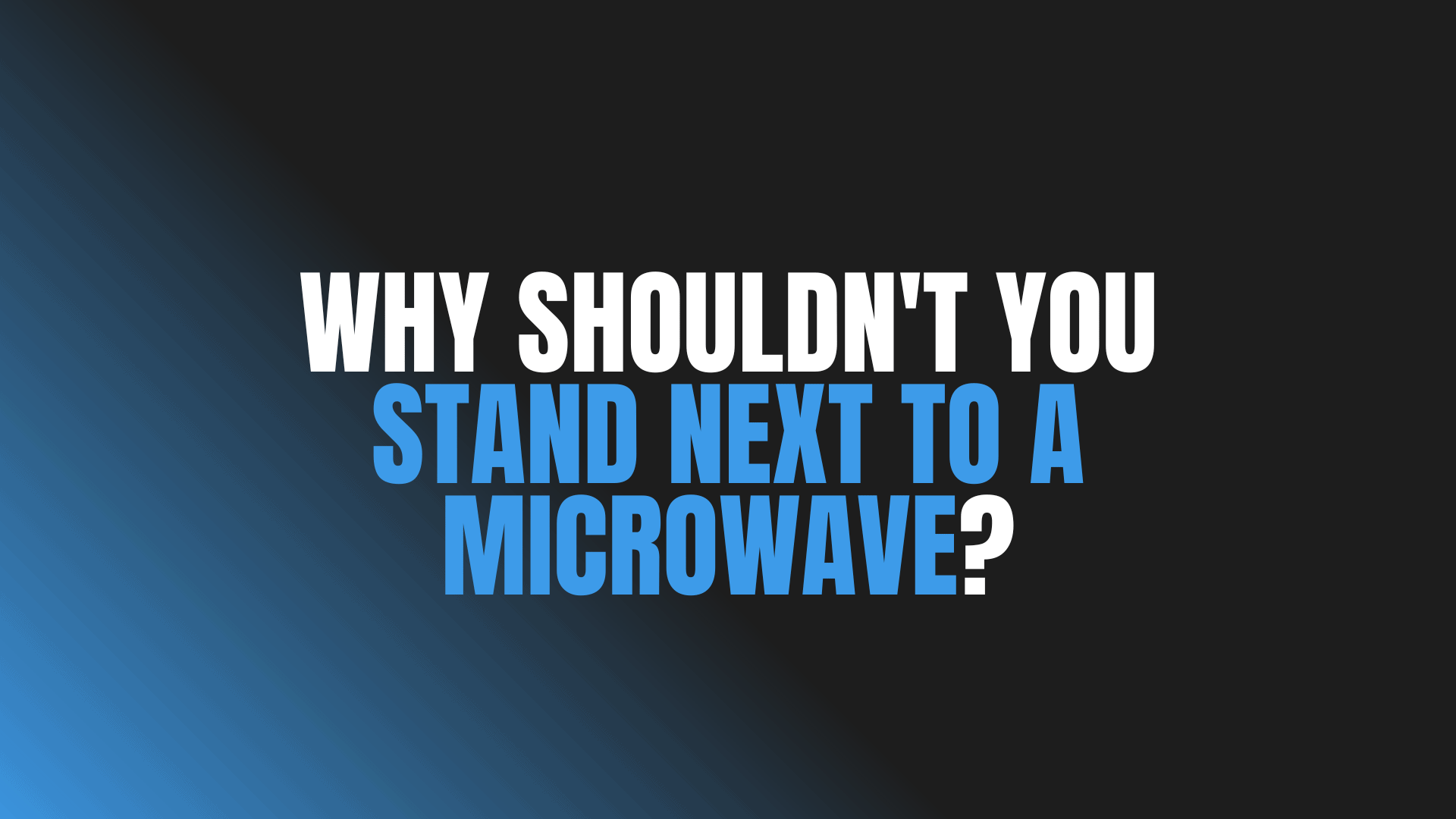
Question: Why Shouldn’t You Stand Next to a Microwave?
Answer: You shouldn’t stand next to a microwave because, while extremely rare, faulty seals could leak minimal amounts of microwave radiation. It’s best practice to stand a few feet away as a precaution.
Microwave Safety: Debunking Myths and Understanding Risks
Many people wonder about microwave safety. Some believe standing near a microwave during operation poses health risks. This concern often stems from a misunderstanding of how microwaves work. This article examines the science behind microwave ovens and addresses the question: Why shouldn’t you stand next to a microwave?
We will explore the potential risks, separate fact from fiction, and provide clear, concise answers based on scientific evidence. This information will empower you to use your microwave oven safely and effectively.
How Microwaves Work
Microwave ovens heat food using electromagnetic radiation. These waves cause water molecules in food to vibrate, producing heat. The metal casing of the microwave contains this radiation, preventing it from escaping.
Microwaves use a specific frequency (2.45 GHz) that primarily affects water. While other substances may absorb some microwave energy, water absorbs it most efficiently. This focused heating allows for quick and convenient cooking.
Click here to read more about Blue Kitchen Refacing
Related Article: Why Does Microwaved Food Taste Bad?
Related Article: What’s the Best Type of Microwave to Buy?
Potential Health Effects of Microwave Radiation
Exposure to high levels of microwave radiation can cause burns and he heat generated by the waves can damage tissue. However, the low levels of radiation leaking from a properly functioning microwave pose minimal risk.
Some people report experiencing headaches or other symptoms near operating microwaves. Yet, scientific studies have not established a clear link between these symptoms and microwave exposure. More research is needed to investigate these anecdotal reports.
Debunking the Cancer Myth
Some believe microwave radiation causes cancer but his claim lacks scientific support. The type of radiation used in microwaves is non-ionizing. Non-ionizing radiation lacks the energy to damage DNA and cause cancer.
Ionizing radiation, like X-rays and gamma rays, can cause cancer. Microwaves operate at a much lower frequency and energy level. This fundamental difference means microwaves do not pose the same cancer risk.
Why Shouldn’t You Stand Next to a Microwave?
While the risks are minimal with a properly functioning microwave, minimizing exposure to any potential radiation leakage is sensible. Standing directly next to a microwave while it operates offers no benefit.
Manufacturers design microwaves to contain radiation within the oven. However, keeping a small distance offers an extra layer of precaution. This distance is particularly important for children and pregnant women, who may be more sensitive.
Best Practices for Microwave Safety
Follow these simple steps to ensure safe microwave usage:
Check for Damage:
Inspect your microwave regularly for damage, especially the door and seals.Maintain Distance:
Stand a few feet away from the microwave while it’s in use.Follow Instructions:
Use microwave-safe containers and follow manufacturer instructions.Avoid Overheating:
Overheating liquids can lead to superheating and potential burns.Repair Promptly:
If you suspect your microwave is damaged, have it repaired by a qualified technician.
Ensuring Safe Microwave Use
Microwave ovens provide a convenient way to cook and reheat food. Understanding how they work and following safety precautions ensures their safe use. Regular maintenance, prompt repairs, and simple precautions, like maintaining a small distance during operation, can minimize any potential risks.
While some concerns about microwave safety persist, scientific evidence supports their safety when used correctly. By understanding the facts and dispelling the myths, you can confidently use your microwave as part of a healthy lifestyle. Focus on keeping your appliance in good working order and following the manufacturer’s guidelines.
Reliable sources like Health Canada offer additional information on microwave safety and regulations.

Blue Malue Get in touch with Blue here.
